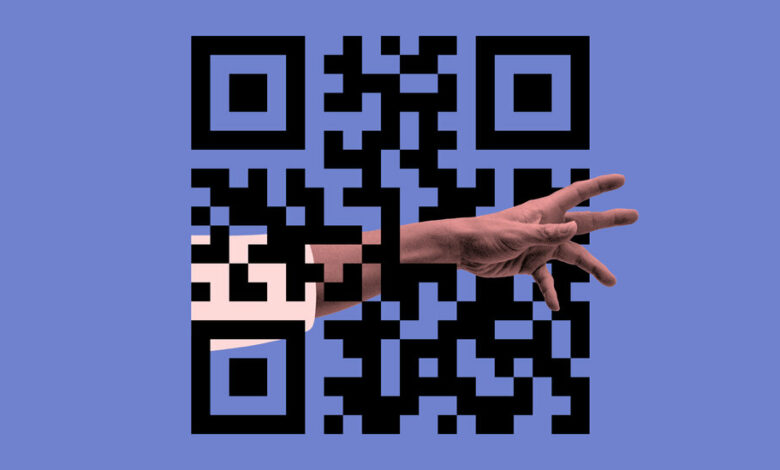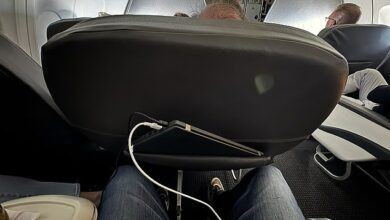Help! Qatar Airways denied us boarding due to a lost connection.

Dear Tripped Up,
I am a single American mother living in Jordan and working for the United Nations. In September 2019, I adopted my then 5-year-old son from China and promised him we would return every year to visit his country. But the pandemic hit. When China finally reopened to tourists in 2023, we obtained visas and booked a July flight to Beijing via Doha on Qatar Airways, paying a total of about $1,400. My now 9-year-old had worked hard to maintain his language skills and was excited but nervous. At the time, the Chinese government required passengers to fill out a “Health Declaration Form” in advance or upon arrival. The link on Qatar Airways’ website was broken, but I confirmed online and with friends who had recently traveled to China that I could fill it out upon arrival. At the airport, Qatar Airways disagreed and when I couldn’t get the form to work again, we were denied boarding. My son collapsed on the airport floor, sobbing. I rebooked for the next day and we flew via Istanbul to Beijing with Royal Jordanian and China Southern for $1,882. Neither airline asked to see the QR code that indicated my form had been approved: all passengers had to fill out new forms upon arrival. Qatar Airways refunded most of the tickets — we received $1,185 — but refused to admit it was wrong. Considering the more expensive last-minute flight and other costs (such as rebooking domestic flights and trains in China), we are out about $930. I think the airline should issue a flight voucher that compensates us for that amount. Can you help? Elizabeth, Amman, Jordan
Dear Elizabeth,
Your introduction to the complex world of international travel documentation was especially devastating because of the emotional impact this trip had on your family. But confusion over documentation leads to “thousands of denied boardings every day,” says Max Tremaine, CEO of Sherpaa company that maintains a database of international entry requirements for travelers.
I don’t want to excuse Qatar Airways for what I’ll affectionately call heavy-handed rule enforcement, but frontline airline employees who face long check-in lines can have a difficult job making quick judgments about the ask whether travelers have sufficient documents or not.
Countries all have their own entry rules depending on what passports travelers have and where they come from, and airlines are fined if they accidentally let people fly. The decision can be easy if their customers are an American family with a valid passport going directly from New York to London for a week’s vacation. But traveling can be complicated – consider, for example, the moment when a Dutch banker heads to Bangladesh via Cairo or an Australian trapeze artist takes a one-way ticket via Frankfurt to a performance in Kyrgyzstan. The pandemic has only made this complicated system even more complicated. In your situation, you went through Qatar Airways’ hub in Doha, meaning those behind you in line in Jordan were likely heading to dozens of countries, all with their own rules.
In its responses to your complaints, Qatar Airways cited information from Timatic, a system used by many international airlines to keep track of ever-changing entry and exit regulations. One email response stated: “At the time of your travel, a QR code for China was required before boarding the flight, and also according to Chinese regulations.”
When I contacted the airline, I received a similar response in a statement from Craig Thomas, Qatar’s vice president for sales in the Americas. “Passengers traveling to China were required to complete an Online China Customs Health e-Declaration prior to boarding the aircraft,” he wrote, noting that local entry requirements are “often complex” and that the airline “is committed to helping our passengers navigate any issues that may arise.”
But Qatar is wrong about what Timatic advised at the time. Timatic is run by the International Air Transport Association, a trade body better known as IATA. The assistant director of the group that runs Timatic from the Netherlands, Mahir Sahin, sent me the factual information that Qatar Airways staff would rely on in July 2023:
“Passengers must complete an ‘Exit/Entry Health Declaration Form’ and show a QR code before departure or upon arrival.”
The “or upon arrival” part applied to your situation, as you discovered on your second itinerary. When I asked Qatar Airways about this apparent omission on their part and asked if this would change their decision not to reimburse you with the requested credit, they did not respond.
But airlines often take extra care in these cases, wary of government fines if they carry passengers without proper documentation. Timatic has no official status, Mr. Sahin said. The airline is ultimately responsible.
Mr Sahin explained how an agent at the check-in counter thought: “The agent checking you in doesn’t know if anything you enter will be accepted by the government.”
Airlines still sometimes use risk management, he said, and make judgments when boarding a passenger, especially in cases where government rules and regulations leave room for interpretation.
But there are precautions you and other travelers can take to reduce their risk.
International documentation requirements vary, so it’s worth checking your country’s own policies and the U.S. State Department’s recommendations.
But the best strategy, Mr. Sahin said, is to use the same source that provides the airline with information about entry requirements. Many international airlines offer online resources powered by data from Timatic (or other vendors such as Sherpa) that allow passengers to read what they are reading. (Qatar Airways’ Travel requirements page uses Timatic data.)
You can also consult the databases yourself using this rather clumsy but perfectly functional page for Timatic, and this one is more user-friendly, but not necessarily as detailed for Sherpa.
But ultimately, as you’ve discovered, there’s still room for airline agents to interpret, and sometimes misinterpret, the rules. This is especially true when connecting to a third country via an airline’s hub and the agent may not be familiar with that destination’s immigration procedures.
Even that American family going to London could, in theory, be asked to prove that they have arranged accommodation. according to the British governmentTimatic does not mention this in its airline guidelines, and for most travelers it is unlikely to happen.
But if Timatic states a requirement, travelers should take it seriously, even if they find conflicting information elsewhere.
I received an email from a woman in California who was denied boarding by Avianca for a trip from Los Angeles via San Salvador and Bogotá, Colombia, to La Paz, Bolivia. In Los Angeles, an Avianca employee refused to let her board, telling the traveler she needed passport photos and a copy of recent bank statements. She countered that there is no mention of this requirement at the State Department Bolivia admission requirements page. But that was the wrong place to look. If she had consulted Avianca’s Timatic Supplied Page in terms of travel requirements, she is said to have seen a requirement that passengers must have a passport photo and provide “proof of funds” upon arrival, and “this could include bank statements.”
She rebooked for the next day, got photos, and dutifully printed out the bank statements. But you know how the story goes: Bolivian officials asked for neither.
If you need advice on a well-designed itinerary gone wrong, send an email to TrippedUp@nytimes.com.




